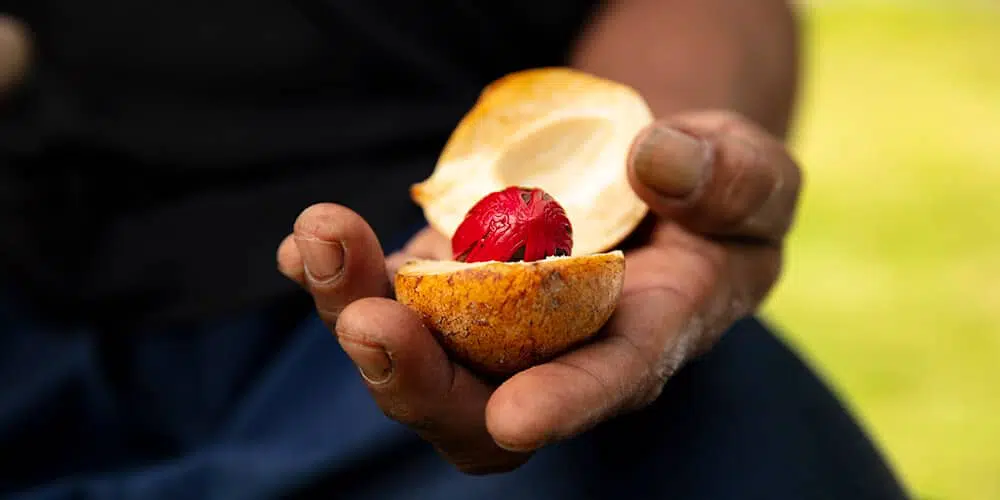Mace
Mace is a spice, derived from the same fruit as nutmeg. What many people do not know is that mace is the aril around the nutmeg. The aril is also called ‘arillus’. Because mace and nutmeg come from the same fruit, they smell and taste similar. After drying the nutmeg in the sun, the shell bursts and the nut and mace are released. The mace is then carefully and manually separated from the nut and dried.




